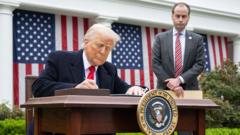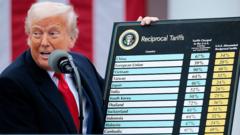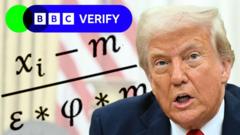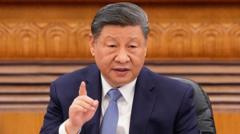President Trump's newly announced tariffs are designed to address trade imbalances and protect American jobs, but they may lead to significant international economic effects. The tariffs, imposing a baseline rate of 10% and higher rates on specific countries, have elicited reactions from global leaders.
Understanding Trump's New Tariff Plan: Key Points and Impacts

Understanding Trump's New Tariff Plan: Key Points and Impacts
President Trump's sweeping tariffs target imports from China, the EU, and several other nations, raising concerns about global economic repercussions.
US President Donald Trump unveiled a significant new set of tariffs on imports during a recent announcement. His administration argues that these tariffs are essential for fostering American economic growth while also safeguarding jobs and manufacturing within the United States. This new tax regime is expected to have extensive implications for global trade dynamics.
One key element of Trump's tariff plan is a 10% baseline tariff on all imports that will take effect on April 5. This means the responsibility for paying this tax lies with the companies that import products into the U.S., although the financial burden may ultimately translate to higher prices for consumers.
A specific group of countries will be classified as "worst offenders," facing custom tariffs that are significantly above the baseline rate. These tariffs will go into effect on April 9 and primarily target nations with higher tariffs on U.S. products or those that impose barriers to American trade. Some of the notable countries included in this category are China, with a staggering 54% rate, and the European Union, which faces a 20% tariff, among others.
In contrast, Canada and Mexico are exempt from the new 10% baseline tariff, as they have been involved in a separate tariff framework due to ongoing trade discussions between the countries and concerns around the entry of controlled substances into the U.S. This move follows previous executive orders from Trump's administration, which already imposed a 25% tariff on goods from these neighboring countries.
Additionally, Trump has announced that a 25% tariff on all foreign-made automobiles will commence immediately. This tariff is aimed at further protecting the American automotive industry and is part of Trump's overarching trade strategy.
As Trump’s tariff announcement resonates throughout various sectors, leaders of the targeted nations have expressed their concerns over the potential negative impacts on global trade. What remains to be seen is how these economic decisions will shape the future of international relationships and trade agreements.






















